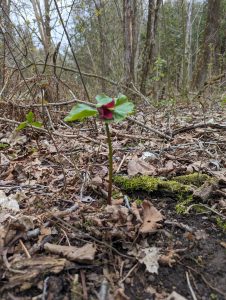I’ve spent my life being really critical of my artistic abilities so this blog took me out of my comfort zone! Lately I’ve been wanting to give myself a chance to create art, especially after learning that putting your hands to use can be an excellent way to relax your brain and get some good feelings from dopamine.
There is data to back up the theory that busy hands are good for your brain. Knitting, painting, carving, needlework, cooking, gardening and so many more activities that use our hands also help us feel happy and calm. Studies by neuroscientist Dr. Kelly Lambert explore the effort driven reward cycle. She believes that moving our hands to produce satisfying creations may help prevent depression and have other positive benefits on mental health.
Applying this science to ourselves and our classrooms could very helpful! Lambert encourages us to get off screens and put our hands and minds to use in more productive ways.
I’ve included a suggestion for an art lesson. You could definitely do this with a class but honestly I also do it for myself. My brain needs a break too!
What you need
Paper – watercolour paper is great but try experimenting with old music sheets, pages out of discarded books, box board, etc
Watercolour paints – I have very inexpensive ones
Small paintbrush – since this is very blobby art, the brush doesn’t matter much
2 containers of water (one for washing brush and one for clean water to add to paint)
A marker, pen, pencil crayon or crayon
Scissors and glue (optional)
Technique
- Use masking tape to frame the paper and attach to the work surface.
- Draw curvy intersecting lines with your marker – many of them
- Where the lines intersect make them thicker and more curved
- Spray your water colour paints with water and let them sit for a minute
- Dip your brush in and paint one of the empty spaces.
- Continue filling the empty spaces with colour.
- Allow colours to mix or leave each blob as a colour of its own.
- Let it dry.
- Options:
- Fold it and use it as a card.
- Cut out shapes and glue them on a card.
- Frame it!
If you enjoyed this activity then I encourage you to follow Andrea Nelson on Instagram. She often references that creating art soothes her brain. Her videos inspired me to do this!

Photo by the author.

Photo by the author.

Photo by the author.




